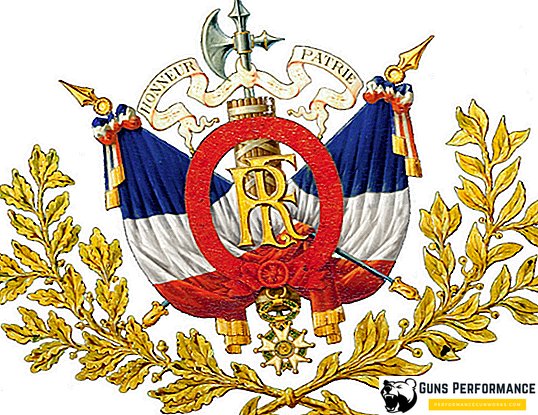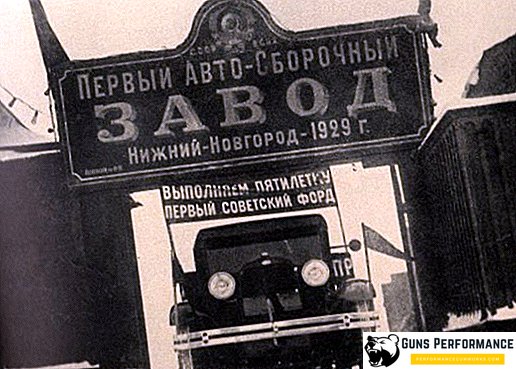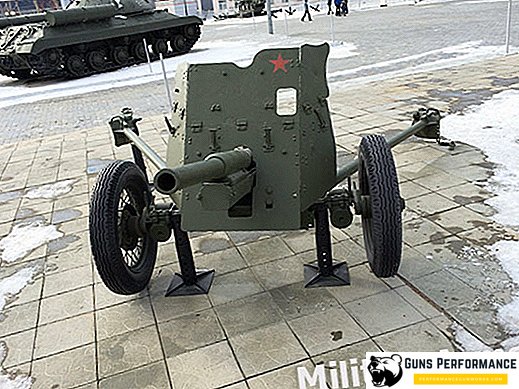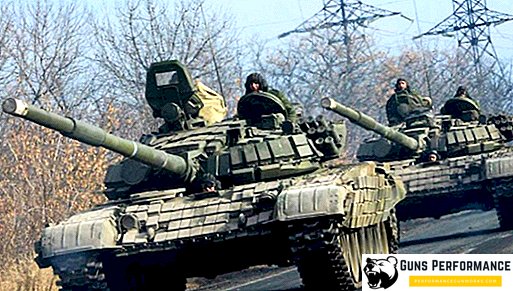France is considered one of the few countries in the world where the highest civilian post, the presidency of the country, was first introduced. At the same time, the status of French presidents has always been distinguished by the fullness of the executive power and the breadth of state powers, which were enshrined in the Constitution of the French Republic.

Prehistory of the beginning of presidential rule
Strong presidential power in France has developed historically, inheriting most of the levers of government and authority from the French monarchs. France almost always had a political weight on the world stage, becoming one of the leading world powers. This was greatly contributed by the strong state apparatus, the well-functioning system of redistribution of power in the country. Paris successfully coped not only with management in the metropolis itself. The power of the French monarchs, emperors and presidents of the French Republic extended to vast overseas territories and colonies in Africa, North America and Southeast Asia.

However, despite the efficiency of the state machine, at a certain stage in the country social and political conditions developed that radically changed the whole system of government. First, the absolute monarchy was replaced by a constitutional monarchy, the end of which in 1792 was marked by the Great French Revolution. From this moment in the country begins the era of republican rule. Despite the fact that the First Republic did not last long - only 7 years - it was during this period that the foundation of the new system of government was laid. The state power in the country has undergone significant changes, which the French emperors and kings subsequently had to reckon with, at some point in French history at the top of state power.

The period of Napoleon’s Empire (1804-1815) became the zenith of glory for France. At this time, the government in the country was concentrated in the same hands. Despite the fact that Napoleon was defeated, and France again became a kingdom for a short period, the first emperor of France, Napoleon Bonaparte, was credited with the main role in building a harmonious state system of governance. Ultimately, the authority and status of the emperor were a prologue to the establishment in the country of the highest state office - the post of French president.
The birth of the presidential form of government in France
The period of presidency in France is closely connected with the historical events that shook the country throughout the XIX century. For the First Republic there was a leapfrog in the highest echelons of power. The National Convention and the Committee of Public Safety were replaced by the Directory, which gave birth to Napoleon, the future French emperor. After the military coup d'état of 18 Brumaire (November 9, 1799, according to the Gregorian calendar), the republican form of government was formally preserved in the country, but all the supreme power in France was now in the hands of three consuls — Siyes, Roger Ducos — and General Napoleon Bonaparte, who are temporary government.
With the liquidation of the directory ended the Great French Revolution. The First Republic will still exist over the next five years. Its end will come in 1804 with the proclamation of Napoleon Bonaparte the emperor of all the French. The Great French Revolution and the time of the existence of Napoleon’s empire are rightly considered the most dramatic periods in the history of the French state.
Subsequent events were no less tragic and dramatic, but they changed the state of France. First, the next French revolution of 1848 put an end to the July monarchy, giving rise to a new, second republic in the history of France. In the wake of a revolutionary upsurge, and taking advantage of the complex military-political situation that prevailed in the highest establishment of French politics, the first president of the Second Republic was Louis Napoleon Bonaparte, the nephew of Emperor Napoleon I.
As a result, at the first in the history of France direct elections of the head of state, Louis Napoleon managed to win a landslide victory, receiving 75% of the votes of the voters who participated in the vote. In the future, the system of direct elections in France was abolished, revived only in 1965 during the time of the Fifth Republic.

The inauguration of the first French president was held on December 20, 1848, during which Louis Napoleon Bonaparte took the oath on the text of the Constitution. The very first president of the French state at the time of election was only 40 years old, which was for a long time an absolute record.
Nowadays Emmanuel Macron, who holds the presidential office in the Elysee Palace, is the youngest president in the history of France.
The presidency of Louis Napoleon Bonaparte is a controversial period in French history. Under the first president, France became an economically powerful country, competing with the British Empire for the right of leadership in the European continent and in the world. With the help of French troops is the process of unification of Italy. However, despite the achievements in the external arena, the internal political climate in France under the first president was not very stable.
Conspiracies and coup attempts followed one after the other. In the wake of the struggle against internal counter-revolution, Louis Napoleon himself initiated the 1851 coup. As a result, all democratic institutions were abolished in the country, a police regime was established, headed by the first president and his political puppets. In 1852, it was announced the establishment of the Second Empire in the country - the Second Republic sunk into oblivion.

The end of the reign of Emperor Napoleon III was the cruel defeat of the French in the Franco-Prussian War of 1870. The defeat of the French army near Verdun and the capture by the Germans on September 2, 1870 of Emperor Napoleon III put an end to the history of the Second Empire. The next revolution that followed these events gave birth to the next Third Republic. From this point on, all subsequent presidents of the country will be directly linked to the fate of the three republics. Accordingly, the periodization of presidential rule is calculated. Only now one can clearly trace the years of each president’s rule, his belonging to a certain political force and link the role of each person with the events of French history.
All presidents of France since the Third Republic
Starting an analysis of the activities of all subsequent presidents of the French state, it should be noted that the scope of their functions and powers is now strictly regulated in the Constitution of the country. Each of the subsequent revisions of the Basic Law defined the relationship between the presidential branch of government and the government. Special attention should be paid to the method of electing the president of the country, practiced in France during the subsequent period of history.

Since the fall of the Second Republic, a person has been elected to the highest state post in France, whose candidacy received more votes in the National Assembly. In this way, on August 31, 1871, the second president of the country was elected - Adolf Thier. Despite the fact that the term of the second president was determined to be three years, after a year and a half, in May 1873, Thiers resigned. In the country, elections of a new head of state were appointed.
The third president of the Third Republic was General Patrice de Mac-Magon, who held the title of count. The years of Patrice de MacMagon’s rule were 1873–1879. It was during his rule that France adopted new Constitutional laws in 1875, which determined the status of the President of France, established the method of electing the head of state and determined the duration of the presidential term of 7 years. For the first time at the legislative level, the right of the head of state to be re-elected for a second term was fixed. The third French president was remembered in history by his fierce monarchism. During his time in power, MacMahon tried to curtail all the revolutionary gains, arranging a period of political reaction. Only thanks to the strong position of the democratic forces in the National Assembly of France, has the country managed to preserve the republican form of government and democratic system. Under pressure from political opponents, MacMahon left his post ahead of schedule in January 1879.

In the period from 1879 to 1940, 19 persons served as the President of France, five of whom were temporarily in high office. The list of presidents for this era of the Third Republic is as follows:
- President Francois-Paul-Jules Grevy, who held the post twice - in 1879-1986. and in the years 1886-87;
- Marie-Francois-Sadi Carnot, who held the high office of the country's president in 1837-1894;
- Jean-Paul-Pierre-Casimir Casimir-Perier, June 1894 - January 1895;
- Felix-Francois Faure, reign from 1895 to 1899;
- Emile-Francois Loubet, years of board 1899-1906;
- Clement-Armand Falier, who served as president of the country for 7 years - from 1906 to 1913;
- Raymond Nikola-Landry Poincaré, years of government 1913-1920;
- Paul-Eugène-Louis Deschanel, who served as President of France for 8 months of 1920;
- Etienne-Alexander Millerand, who received the presidency in 1920 and held it during 1920-1924;
- Pierre-Paul-Henri-Gaston Dumerg, years of government 1924-1931;
- Joseph-Atanaz-Paul Doumer, who served as head of state for 11 months, from June 1931 to May 1932;
- Albert-Francois Lebrun served as president of the country in 1932-1940.


Judging by the list, not all French presidents held high office during the seven years allotted by the Constitution. In French politics, voluntary resignation of politicians of the highest rank is quite common, and presidents are no exception in this case. This explains the number of acting president, of which there were five. As a rule, such a person was appointed for a transitional period until the next presidential election. Acting Presidents were in January 1879, in December 1887, in 1893, in 1895, and in 1899. In the XX century. The French president was only two persons: Francois-Marshal, Frederic, who acted as president in 1924, and André-Pierre-Gabriel-Amed Tardieu, who held a high post in 1932.

At the end of the 19th century, parties and unions came to French politics. Prior to that, the presidents of France were politically independent persons. Since the presidency of Emile-Francois Loubet, representing the Republican Democratic Alliance, all subsequent presidents have been representatives of this or that political force. Only two of this long list have held the presidency twice: Francois-Paul-Jules Grevy and Albert-Francois Lebrun.
Of these persons, the Third Republic can be justly proud of many. So under President Raymond-Nicolas-Landry Poincaré, France entered the First World War and emerged from this colossal slaughter among the victorious countries. During the first third of the 20th century, French presidents took an active part in many aspects of world politics, raising the prestige of France to a high degree. The Second World War, which began on September 1, 1939, soon ended the Third Republic. After the defeat of France by the fascist German forces and the capitulation signed on July 11, 1940, President Albert-Francois Lebrun was removed from power. The third republic de facto ceased to exist, giving way to the political regime of Vichy, headed by Marshal Henri-Philippe Pétain.

Presidential power in the Fourth and Fifth Republics
After the end of the Second World War, the newly assembled Constituent Assembly adopted a new draft of the Constitution, which on October 13, 1946 was submitted to a nationwide referendum. Formally, this meant the establishment in France of a parliamentary-presidential republic, in which the powers of the president of the country were declarative, representative. The first post-war president of the country in 1947 was Jules-Vincent Oriol, representing the French socialist party.
Seven years later, in 1954, Jules-Gustave-René Coty, a representative of the petty bourgeoisie and independent peasant democrats, was elected president. Under him, a hero and a veteran of World War II, the leader of the Fighting France movement, General Charles de Gaulle, was promoted to leading roles in French politics. In 1958, the government headed by him put forward for the next referendum a draft of the new Constitution, in which the presidential branch of power became the main one in France. With the adoption of the new constitution, the Fourth Republic ended, the era of the Fifth Republic came.

In accordance with the new Basic Law, the French Parliament was significantly limited in its powers, therefore, the status of the president is increased. The head of state becomes the sovereign chief executive in the country. Presidential orders have the power of legislation. The duties of the President of the country include the formation of the Cabinet of Ministers, which is then considered and approved by the French Parliament.
The President chairs the meeting of the Cabinet of Ministers, adopts decrees, signs government ordinances and decrees, and makes appointments to government posts. As supreme commander in chief, the French president bears full responsibility for the sovereignty of the French state and the combat capability of the armed forces of the French Republic. Under de Gaulle, the principle of electing a president changes. He is now elected not in the walls of parliament. This function was performed by an electoral college representing all departments of the country.

The 18th President of the country, General Charles-Andre-Joseph-Marie de Gaulle - the brightest person of this period - held a high post in 1959-1969. It was he who was the first of all the post-war presidents who managed to really make the presidential branch of power in the country truly strong and durable. France left the circle of unofficial international isolation in which the country found itself after the Second World War. One of the achievements of President de Gaulle can be the beginning of decolonization. France finally goes from the imperial system of government to the francophone community of nations. Algeria, Vietnam and Cambodia gain independence. In June 1962, the country has a new electoral law, under which the head of state is elected by direct popular vote.
Under de Gaulle, France’s foreign policy changes. With the beginning of the aggressive actions of the United States in Indochina, France is withdrawing from NATO. The period of presidency of Charles de Gaulle accounts for a period of normalization of political relations with the Federal Republic of Germany and with the Soviet Union. However, reforms in the domestic political arena end in complete collapse, many goals in the socio-economic sector are not achieved. The actions of civil disobedience in Paris, which broke out in May 1968, led to de Gaulle’s voluntary resignation as president.
As a result of a popular direct vote in 1969, Georges-Jean-Raymond Pompidou was elected to the presidency of France, during the years 1969-1974. For the period of the Fifth Republic accounted for 8 presidents. Following Georges Pompidou, the following persons are elected to the highest state post:
- Valery-Rene-Marie-Georges Giscard d'Estaing, representative of the Federation of Independent Republicans, reign 1974-82;
- Francois-Maurice-Adrien-Marie Mitterand, representing the French socialists. Francois Mitterrand was in office for two presidential terms from 1981 to 1995;
- Jacques-Rene Chirac, years of government 1995-2007;
- Nicola-Paul-Stefan Sarkozy de Nagy-Boccia, who occupied the Elysee Palace in 2007-2012;
- François-Gerard-Georges-Nicolas Hollande became the 24th President of France, occupying a high post in the period 2012–17.


In 2018, new elections were held in the country, in which Emmanuel-Jean-Michel-Frederic Macron won, becoming the 25th President of the French Republic and at the same time, the youngest politician who took this high post. It should be noted that since 2002, the presidential term was reduced to 5 years, leaving the Head of State the right to be re-elected for a second term.
Резиденция президента Франции
Начиная с 1848 года, после избрания на высший государственный пост Луи-Наполеона Бонапарта, Елисейский дворец становится официальной резиденцией президента Республики. Дворец представляет собой комплекс сооружений, расположенный в VII округе французской столицы. Основное здание было построено в 1722 году и считалось одним из самых фешенебельных строений Парижа XVIII.

Во времена правления Наполеона I в здании сначала размещались правительственные структуры, а после установлении Империи Елисейский дворец стал официальной резиденцией французского императора.
На территории дворцового комплекса находятся не только жилые апартаменты главы государства. В Елисейском дворце находится приемная президента, где глава Пятой республики принимает высокопоставленных иностранных гостей, зарубежные делегации. Дворец является официальным местом заседаний Кабинета Министров.












